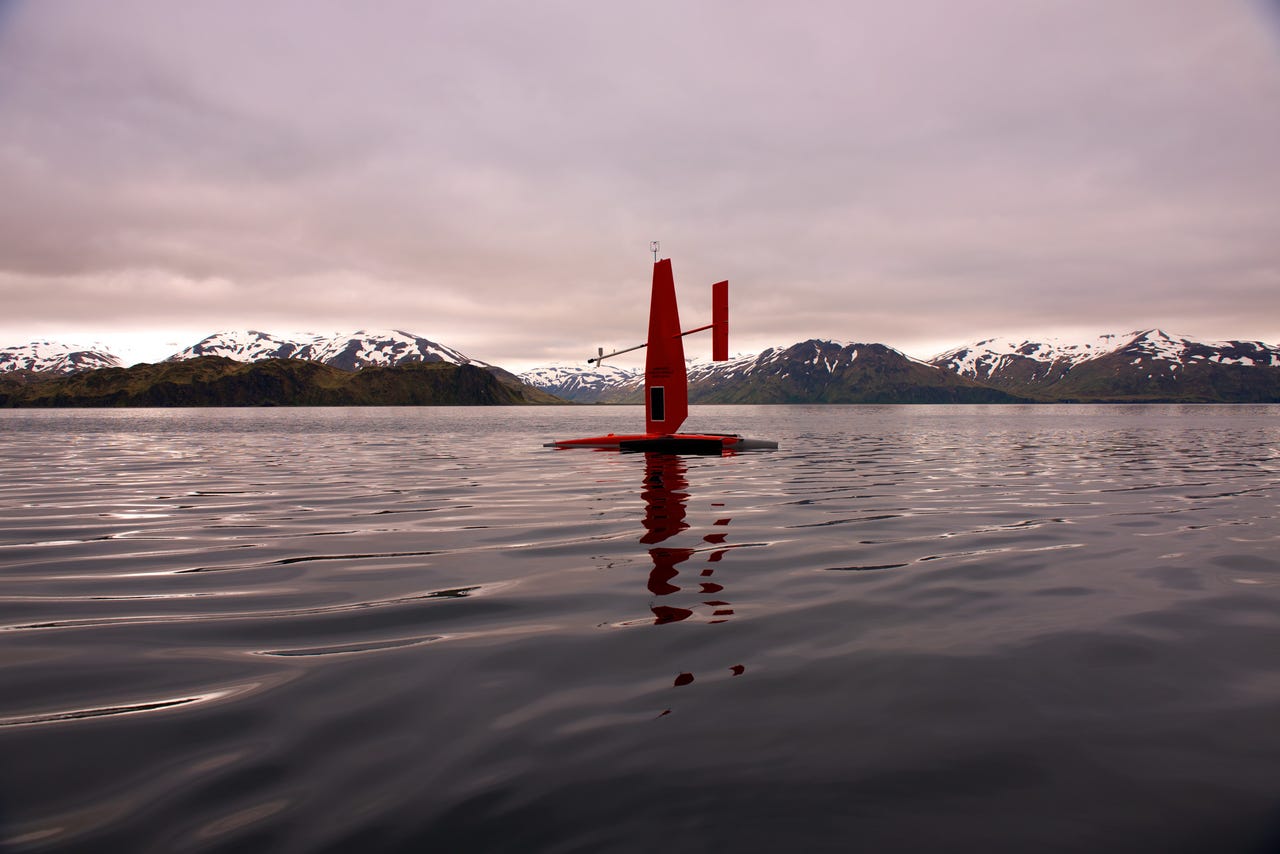Autonomous sailing drones investigate climate change on the high seas


An autonomous sail boat collects ocean data in the Dutch Harbor, AK. (Image: Saildrone)
A whopping 97 percent of the Earth's water is in oceans, so it's vital that we monitor and understand them. Therefore, ocean data is regularly collected by government agencies, research scientists, and private companies. Currently, ocean research is conducted on large, expensive ships, but a couple of entrepreneurs in California have a new solution: autonomous sailing drones.
A company called Saildrone launched commercially this year, and the founders have announced they raised $14 million in Series A funding, led by Social Capital with investments from the Capricorn Investment Group and Lux Capital. The money will be used to accelerate production of the sailing drones, which are made in California. It will also help increase the company's data processing capacity and expand commercial operations.
Saildrone doesn't sell or rent its fleet of autonomous boats. Instead, customers purchase the data, which can be used to gain essential insights about the ocean's activities and health.
During a phone interview, Sailrone's COO, Sebastien de Halleux, explained, "If you were to divide oceans around the world in six-by-six degree grids, you would get 1,000 such grids, and 1,000 drones around the ocean would give everyone a pulse of climate change and the state of the planet."
De Halleux and Saildrone's founder, Richard Jenkins, went to the same university in London, but they didn't meet until years later, while they were both sailing in San Francisco. Beyond their shared hobby, their professional goals and skills were a perfect match. After successfully launching and selling two software companies (Glu Mobile, Playfish), de Halleux was looking for a way to use the power of data to "impact humanity for good". Jenkins, on the other hand, had spent 10 years developing wing technology that he used to sail at 126.1mph, beating the world record for wind-powered land speed. His record-setting wing technology is now the backbone of Saildrone.
The data that the drones collect is used for three main applications. First, surface data is used to improve the predictability of weather and climate. Current methods include satellite, subsea data, and primarily deep ocean buoys. Seas of buoys are used, for example, to detect early signs of tsunamis. However, the buoys are prone to failure, since they are located in harsh environments in the open ocean. When a buoy unexpectedly goes offline, it can't easily be replaced. Deep sea missions typically require a $100million ship, which costs tens of thousands of dollars per day to operate. Sending a ship out to fix a single buoy just doesn't make sense, but replacing a sailing drone is relatively easy.
A second application is environmental monitoring. The drones track the chemical composition of the water and identify any pollutants. De Halleux says, "Our drones can autonomously detect very, very small amounts of hydrocarbons on the surface of the ocean and trigger early warning signals."
Monitoring ocean water has become increasingly important as scientists study ocean acidification. This phenomenon describes the chemical changes in the ocean as a result of carbon dioxide (CO2) emissions from industrial and agricultural activities. Ever since industrialization, increased amounts of CO2 in the atmosphere have been absorbed by the ocean. On the plus side, the ocean has been a natural air filter, but scientists are now discovering that acidification harms sea creatures and their habitats. When water's pH changes, coral reefs and shells start to dissolve, and some animals can't properly develop all of their bones. These effects trickle down the food chain, so there is an urgent demand for more ocean data.
Ocean acidification combined with overfishing have caused fish shortages in many locations. This creates a third application for drones: providing data that governments can use for fish stock regulations. US and European governments currently manage fisheries by taking ships into fishing grounds to count the number of fish using sonar technology. Sailing drones, however, can get the same job done using far fewer resources (i.e., people and money). They can autonomously cover large swaths of the ocean to help establish the proper quotas to avoid overfishing and ensure maximum yield.
NOAA uses drones to monitor the environment. (Image: Saildrone)
Saildrone's existing customers include governmental agencies and research institutions such as NOAA, NASA, and Stanford University. "All of those agencies have different needs that we can meet at a fraction of the cost of the current solution, and so we can therefore accelerate the scientific process," says de Halleux.
Featured
Private companies can also use ocean data to catch any environmental "leaks" before they become expensive and embarrassing disasters. "We all remember the BP disaster," he says, "so it's quite clear that when we run those kinds of operations we need to be much better at environmental monitoring."
De Halleux says there is high demand from renewable energy operators, such as wind farm operators who need high precision weather models. Insurers are also interested in Saildrone, since high-resolution ocean data can also be used to help predict wild fires and floods, which are the most common natural disasters in the world, according to the World Economic Forum.
According to de Halleux, "Different countries all have the same problems: fishery management, environmental monitoring, and climate prediction." Saildrones have already voyaged over 60,000 nautical miles, with missions in the Atlantic, Pacific, Gulf of Mexico, and Bering Sea, but the latest round of funding will enable more drones to be distributed around the world.